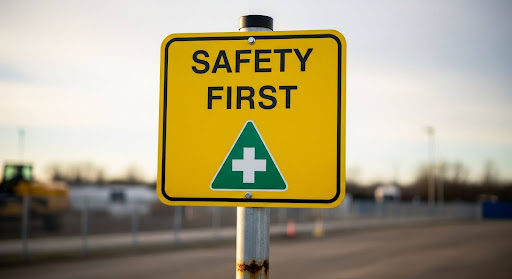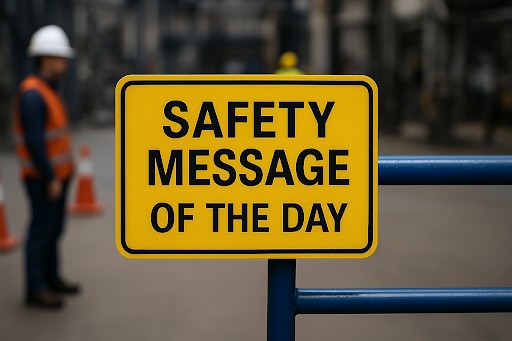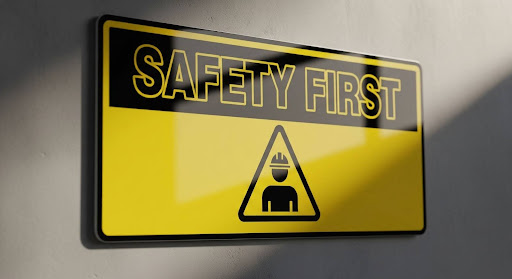When it comes to workplace or community safety, a safety message of the day can make a big difference. It’s a quick, focused reminder that helps everyone keep safety top of mind. Whether it’s about wearing protective gear, following fire escape routes, or preventing slips and falls, a daily safety message can be the small nudge that prevents a big accident.
These short reminders aren’t just for workplaces—they can be used in schools, community centers, and even at home. The goal is simple: reinforce safe habits until they become second nature.
What Is a Safety Message of the Day?
A safety message of the day is a brief, easy-to-remember tip or statement aimed at promoting safe behavior. It’s usually shared at the start of a work shift, during morning meetings, or through internal communication channels like email, notice boards, or instant messaging apps.
The purpose is not to overload people with rules but to provide a consistent reminder that safety is everyone’s responsibility. The best messages are:
- Short and clear – usually one or two sentences
- Relevant to current conditions or tasks
- Action-oriented, encouraging immediate safe behavior
Why Are Daily Safety Messages Important?
Daily safety messages keep safety awareness fresh. Without them, safety protocols can fade into the background, especially in familiar work environments where people may take shortcuts.
Key benefits include:
- Reinforcement of safe habits – Frequent reminders help employees stick to protocols.
- Prevention of accidents – Even simple reminders like “Use three points of contact on ladders” can stop a fall.
- Boosted safety culture – It shows that management cares about safety, which improves employee morale.
- Adaptability to changing conditions – Messages can address weather hazards, new equipment, or seasonal risks.
Examples of Effective Safety Messages
While safety messages vary by industry, here are some examples that work well across environments:
- “Think before you lift—use your legs, not your back.”
- “If you see something unsafe, say something immediately.”
- “Safety gear works only if you wear it—every time.”
- “Clean as you go—prevent slips and falls.”
- “Stay alert—distraction is a leading cause of accidents.”
A great safety message of the day often uses simple, actionable language and relates directly to what employees are doing.
“Stay Alert, Stay Safe” – Why Awareness Matters
One of the most powerful daily reminders you can give is to stay alert and aware of your surroundings. Awareness isn’t just about looking around—it’s about actively observing, identifying potential hazards, and making quick, safe choices.
Here’s why it’s important and how to put it into action:
- Minimize distractions – Put away your phone, keep music at a low volume, and give your full attention to the task at hand.
- Spot hazards early – From slippery floors and loose wires to moving equipment, hazards can appear without warning. Staying aware helps you react in time.
- Wear protective gear – Use personal protective equipment (PPE) as required for your job, ensuring it fits well and is in good condition.
- Avoid fatigue-related mistakes – Take short breaks throughout the day to recharge and maintain focus.
- Speak up about unsafe conditions – If you see a potential hazard or near miss, report it immediately to your supervisor or safety officer.
- Know your emergency procedures – Familiarize yourself with evacuation routes, first aid points, and emergency contacts.
This habit of staying alert is one of the most effective ways to prevent accidents—not only protecting yourself but also safeguarding everyone around you.
How to Choose the Right Safety Message
Choosing the right safety message involves understanding the current risks and your audience. Consider:
- Seasonal hazards – Heat safety tips in summer, ice safety in winter
- Recent incidents – Addressing recurring or recent safety violations
- Job-specific risks – Tailoring messages for construction, healthcare, manufacturing, or office settings
- Regulatory requirements – Reinforcing OSHA or local safety guidelines

Pro tip: Rotate topics to keep them fresh. Too much repetition can make employees tune out.
How to Deliver a Safety Message Effectively
Delivering a safety message isn’t just about the words—it’s also about how it’s communicated.
- Be consistent – Share it at the same time every day, such as before shifts.
- Use multiple channels – Combine in-person announcements with visual reminders like posters or digital displays.
- Encourage engagement – Ask team members to contribute their own tips.
- Lead by example – Supervisors should actively follow the safety advice they promote.
Also Read : Which of the Following Are Safety and Health Resources Workers Can Use Inside of Their Workplace?
FAQs About Safety Messages of the Day
1. How long should a safety message of the day be?
A good safety message is usually one to three sentences long—just enough to make the point without losing attention.
2. Can safety messages really prevent accidents?
Yes. While they’re not a replacement for training, consistent reminders help employees remember and apply safety practices, reducing the likelihood of incidents.
3. Who should create the safety message?
It can be created by a safety officer, supervisor, or even employees. Involving staff helps make the messages relatable and encourages ownership.
4. How often should I change the safety message?
Ideally daily, but at least a few times per week. Keeping messages fresh helps maintain engagement and effectiveness.
Final Word on Daily Safety Messages
A safety message of the day might seem like a small thing, but its long-term impact can be huge. These quick reminders keep everyone focused on what matters most—going home safe at the end of the day.
By making safety messages relevant, engaging, and consistent, you’re not just checking a box—you’re actively shaping a workplace culture where safety comes first. Whether it’s discussing ladder safety, preventing slips, or even asking why must fire extinguishers be routinely maintained?, these small conversations keep essential safety practices front and center. And in the end, that’s the kind of message worth repeating every single day.




